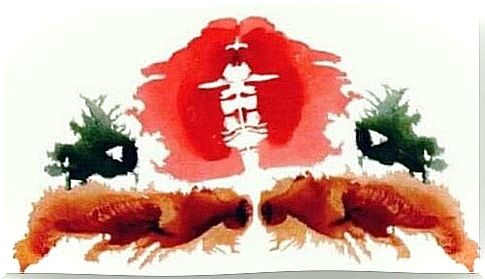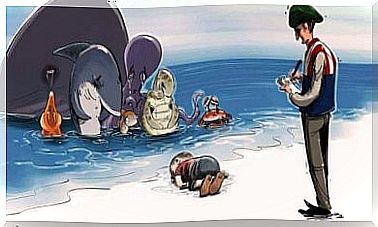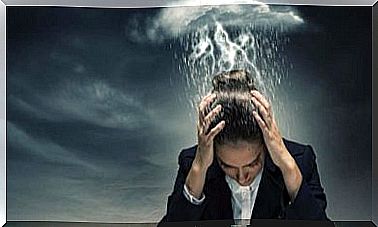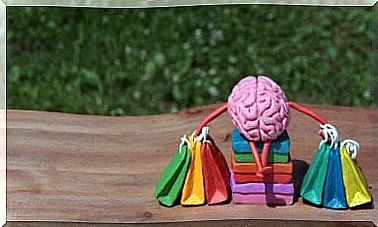The Zulliger Test In The Application Process

The Z test, or Zulliger test, is a projective test that was developed in 1942. At first glance, it is easy to confuse with the Rorschach test, which many more people are familiar with.
However, the Zulliger test does not follow the same protocol and has some advantages over its more well-known counterpart. It is much easier to apply and the interpretation parameters are faster.
The purpose of the test is the same as any other projective test, which is to describe personality traits with a psychoanalytic approach.
As a result, it’s easy to understand why the test is getting a lot of criticism these days, but that doesn’t make it any less interesting. One of its most common uses is as a candidate selection tool during the application process.
One positive aspect of this test that puts it head and shoulders above projective tests, such as the Draw-a-Person-in-the-Rain test, the Baum test and the Murray test, is that the data support its validity. Statistical studies of the test give it a robustness that makes it useful for the human resources department.

The Zulliger Test: What Does It Evaluate and How Do Employers Use It?
The fact that the Zulliger test reminds you of the Rorschach test is no coincidence. Hans Zulliger, the Swiss psychiatrist who developed the test, was one of Hermann Rorschach’s students. If there’s anything that Dr. More famous for this is his influential work as a child psychoanalyst and as a promoter of psychoanalytic pedagogy.
Before the peak of his career, he worked for Rorschach for several years. His goal was to gain a deeper understanding of human personality using the classic inkblot test.
Another external factor helped shape his professional career: World War II. When the war started, the Swiss army was looking for tests to aid in recruitment and Hans Zulliger was the man for the job.
Zulliger conducted intelligence tests, personality tests, and even Rorschach tests. However, he realized that the inkblot tests were far too complex to use efficiently.
What the military needed at the time was efficiency, speed and the ability to take the test of an average of 30 people at a time. It wasn’t long before he developed a new test. Let’s take a look at what his new test entails.
What Does the Zulliger Test Evaluate?
The Zulliger test is a projective test. What does that mean? It means that the tool at hand gives many subjective answers. The answers come from stimuli that stimulate the subject’s imagination, as well as their sensitivity, desires, personality traits, and so on.
- What sets this test apart from other tests of its kind is its validity and ease of application.
- Zulliger designed a test that made it possible to quickly determine whether individuals had mental health problems or not. The test also helped determine whether the test taker had good skills for particular roles in the military.
- The test also helped evaluate an individual’s mental processes: their fears, social adjustment, emotional world, and self-control.
- Today, human resources departments use the Zulliger test in recruiting processes.
How does the test work?
The test can be taken individually or in a group. In both cases, the test subject sees three ink spots. The person administering the test explains that the images have no concrete meaning, but that they evoke different things in each person. The test taker has to explain what he sees in each inkblot.
- The first inkblot is black and white. It is the most compact and test takers usually interpret it as just one concept. It represents the deep thinking of an individual.
- The second is a more interesting image because it uses different bright colors and is more complex. This inkblot evokes more sensations and emotions in the test person. The way the individual interprets this image usually has to do with skills, order, self-control, and so on.
- The last inkblot is gray, black and red. It suggests dynamism and movement and relates to social relationships.
When the test taker has finished writing down the ideas, feelings, and images each inkblot evokes, it’s time to talk. Each individual explains to the therapist or psychologist what they see in every detail of the inkblot.
How is it rated?
Only skilled professionals who are well versed in this test are qualified to interpret it. It would be futile and useless for a layman to try to do this. Understanding projective tests and experience with the Zulliger test is crucial.
The test has no right or wrong answers. The person performing the test analyzes the individual’s response to the inkblots and the individual’s expression.
The more details and feelings the test taker expresses, the higher the number of points. Originality, psychological cohesion, self-perception and thinking style are also evaluated.
It is also worth mentioning that while this is a projective test with clear subjective answers, it gives a general idea of the inner life and personality of the individual.
Today, many companies use the Zulliger test during the application process, along with other tests. Although it was developed more than eighty years ago, it is still an interesting and useful tool.









